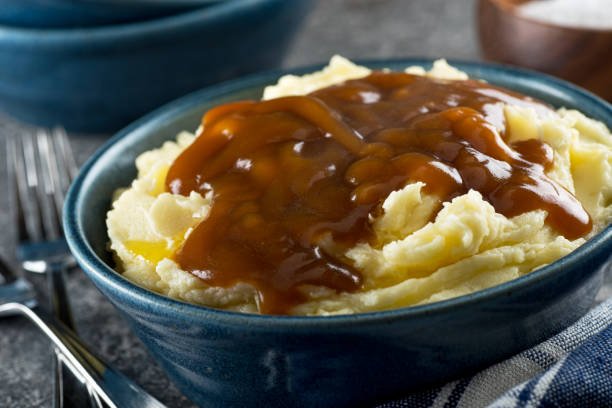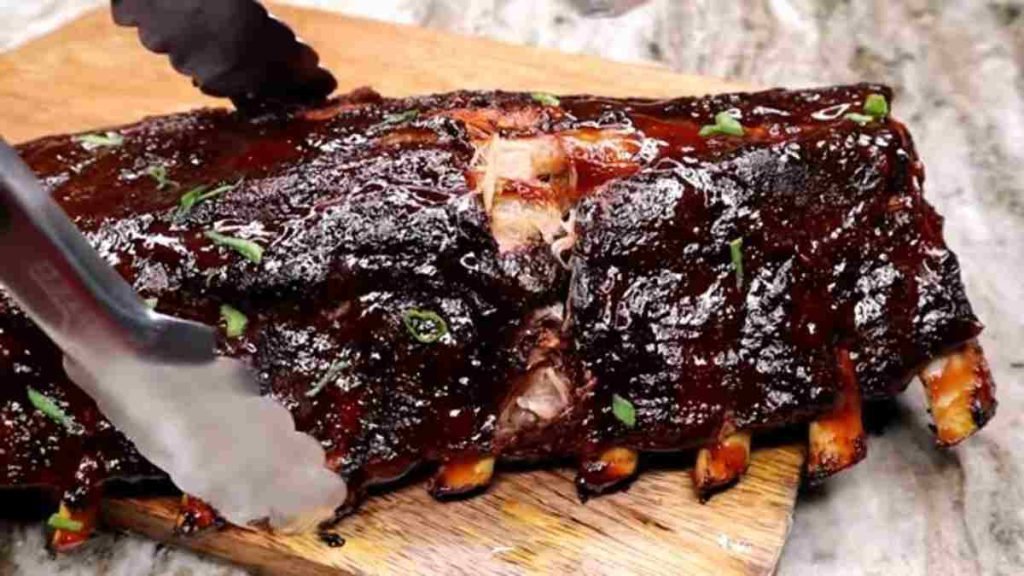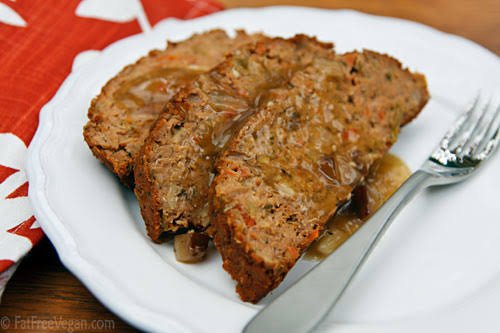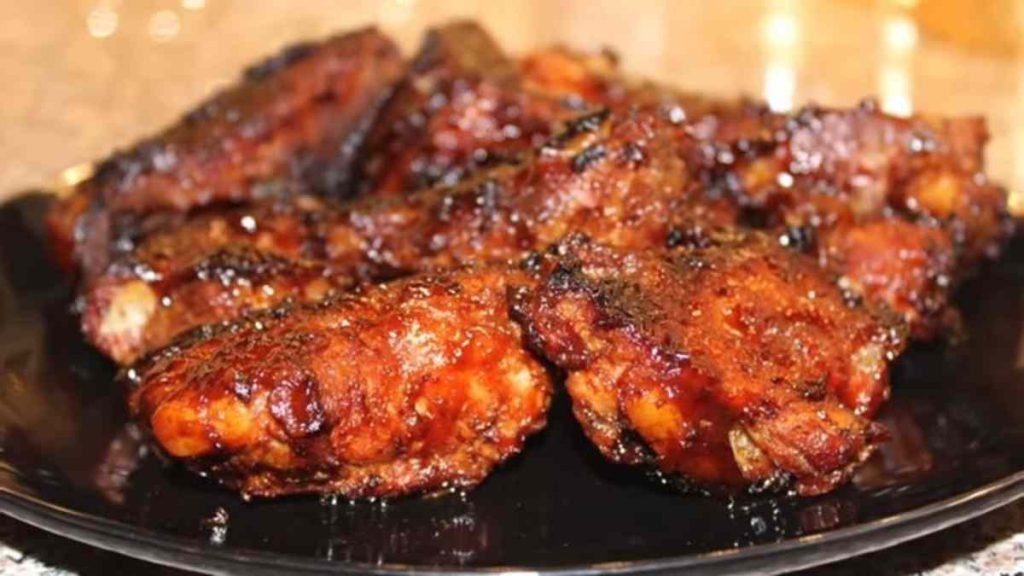Gravy is an essential accompaniment to any roast dinner, especially during the holiday season, where it plays a prominent role in the Thanksgiving feast. This thick and savory sauce is made by blending meat drippings, broth, and flour to create a silky smooth texture that perfectly complements roasted meats, mashed potatoes, and vegetables.
Making gravy from scratch may seem intimidating to some, but with the right ingredients and technique, anyone can create a delicious and savory gravy.
Ingredients You’ll Need
- 4 tablespoons of unsalted butter: Butter is the base of the gravy, providing richness and flavor.
- 4 tablespoons of all-purpose flour: Flour is a thickening agent for the gravy, helping it achieve a smooth and velvety consistency.
- 4 cups of chicken or beef broth: Broth serves as the liquid component of the gravy, adding depth and savory flavors. You can choose either chicken or beef broth based on your preference or the main dish you’re pairing the gravy with.
- 1 teaspoon of dried thyme: Dried thyme is an herb that adds a subtle earthy and aromatic flavor to the gravy, complementing the meaty notes.
- Salt and pepper to taste: These seasonings enhance the overall taste of the gravy and should be added according to your preference.
Equipment You’ll Need
- Whisk
- Saucepan
- Wooden spoon
The butter and flour serve as the base for the gravy, creating a roux that thickens the sauce. The chicken or beef broth adds depth of flavor and a meaty richness to the gravy. Dried thyme complements the savory notes of the sauce, while salt and pepper balance out the flavors.
Step-by-step Guide On How To Make Gravy Using Our Recipe
Making gravy is very easy and simple to make. We’ve created a step-by-step guide on How To Make gravy. Follow these simple steps to create a flavourful gravy that will elevate your meal to the next level.
Step 1: Make the Roux
Place your saucepan over medium heat and put 4 tablespoons of unsalted butter. Once the butter is melted, add 4 tablespoons of all-purpose flour, and whisk until it’s smooth.
Continue whisking for about 2 minutes or until the roux turns a golden brown.
Step 2: Add the Broth
Once the Roux is golden brown, slowly pour 4 cups of your preferred broth, chicken, or beef into the Saucepan. Whisk it continuously after pouring to prevent lumps.
Afterward, add a teaspoon of dried thyme, salt, and pepper to taste, and bring the mixture to a boil. Once it’s boiled, reduce the heat to low and let the gravy simmer for 5 to 10 minutes or until it thickens to desired consistency.
Step 3: Strain and Serve
After the gravy has thickened, remove the saucepan from the heat and sieve the gravy using a fine-mesh sieve into a serving bowl or gravy boat. Use the wooden spoon to press any remaining bits of flour through the sieve.
You can then consume juicy and flavourful gravy with meats, mashed potatoes, and vegetables.
Tips and Tricks for Making the Perfect Gravy
Gravy can elevate even the simplest roast dinner to something truly special. To help you achieve the best results with a recipe, here are some refined tips and tricks to make your gravy perfect
1. Use Homemade Broth
The homemade chicken or beef broth will give your gravy a richer, more complex flavor than store-bought ones. If you have the time, make a batch of broth from scratch using your preferred meats, vegetables, and aromatics.
2. Adjust the seasoning
Don’t be afraid to adjust the seasoning to your liking. If the gravy tastes too bland, add more salt and pepper. If you want more depth of flavor, try adding a splash of red wine or a spoonful of tomato paste.
3. Use a fine-mesh sieve
Use a fine-mesh sieve to sieve the gravy after cooking to remove any lumps or bits of flour, resulting in a smooth and silky sauce.
4. Experiment with Herbs and spices
As much as thyme is a classic herb for making gravy, you can also experiment with other herbs and spices. Herbs like rosemary, sage, and bay leaves are nice alternatives to thyme, and they can also add a unique flavor to your gravy.
5. Make ahead of time
If you’re short on time, you can make the gravy ahead of time and reheat it just before serving. Store the gravy in an airtight container in the refrigerator for up to 3 days.
Nutritional Benefits of Gravy
- Protein Source: Gravy can be good, especially with meat drippings or bone broth. Protein is essential for building and repairing tissues in the body, and it can also help to keep you feeling full and satisfied after a meal.
- Vitamins and Minerals: Gravy can also be a good source of vitamins and minerals, especially if made with vegetables or herbs. For example, a gravy made with onions, garlic, and thyme can provide a range of vitamins and minerals, including vitamin C, B6, and iron.
- Healthy Fats: While gravy contains fat, it can be a source of healthy fats, especially if made with olive or other healthy oils. Healthy fats are important for various bodily functions, including hormone production and brain health.
- Digestive Health: Gravy can also benefit digestive health, especially with bone broth. Bone broth is rich in collagen and other nutrients that can help to support gut health and reduce inflammation.
- Flavor Enhancement: It is worth noting that gravy can be a helpful tool for enhancing the flavor of healthy dishes, such as roasted vegetables or grilled chicken. Adding a small amount of gravy can make these dishes more satisfying and enjoyable, making it easier to stick to a healthy diet overall.
Serving Suggestions for Gravy
With its luscious texture and umami flavors, Gravy has long been a favorite addition to traditional dishes. The finishing touch brings comfort, indulgence, and satisfaction to meals. But why limit ourselves to the tried-and-true when endless possibilities await exploration?
1. Classic Comfort: Pour it Over Mashed Potatoes
Pouring gravy over a steaming mound of mashed potatoes. This combination is the epitome of comfort food. The creamy texture of the potatoes perfectly complements the rich and velvety gravy, creating a heavenly experience with every bite. For an extra touch, sprinkle freshly chopped herbs like parsley or chives on top to add a pop of color and freshness.
2. Roast Perfection: Pair it with a Roasted Meat
Gravy and roasted meats are a match made in culinary heaven. Whether serving up a succulent roast chicken, a juicy beef roast, or a tender pork loin, a ladle of flavorful gravy takes it to new heights.
Drizzle the gravy over the meat slices or serve it on the side for your guests to dip or pour as they, please. The juices from the meat combined with the savory goodness of the gravy create a divine combination that will leave everyone wanting more.
3. Sandwich Sensation: Make a Gravy-Drenched Hot Sandwich
Add warm gravy to the mix to take your sandwich game to the next level. Place slices of your favorite meat, such as roast beef or turkey, between two slices of crusty bread.
Then, pour some warmed gravy over the top, allowing it to soak into the bread and infuse every bite with its deliciousness. This indulgent treat is perfect for a hearty lunch or a comforting dinner.
4. Poutine Paradise: Create a Canadian Delight
Originating from Canada, poutine has gained popularity worldwide for its irresistible combination of fries, cheese curds, and gravy. To make your poutine, fry a batch of crispy French fries, sprinkle them generously with cheese curds, and pour hot gravy over the top.
Watch as the cheese curds melt slightly, creating a gooey, savory indulgence that is hard to resist. This dish is the ultimate comfort food for those looking to satisfy their cravings.
5. Festive Flair: Serve it with Stuffing
During the holiday season, stuffing is a staple on many dinner tables. Take your stuffing to the next level by serving it with flavorful gravy. The combination of the herby stuffing, moistened by the rich gravy, creates a mouthwatering blend of flavors and textures.
Whether you prefer traditional bread stuffing or something more adventurous like sausage and apple stuffing, a drizzle of gravy will make it even more irresistible.
Storage Tips for Gravy
Whether drizzled over mashed potatoes, smothering a roast, or paired with poutine, its delectable flavors can make an ordinary meal extraordinary. But what do you do when there’s leftover gravy, or do you want to prepare it beforehand?
- Refrigerate promptly: Gravy should be refrigerated as soon as possible after it’s been cooked. Leaving it at room temperature for an extended period can allow bacteria to grow and potentially cause food poisoning. Aim to refrigerate it within 2 hours of cooking.
- Use shallow containers: Store the gravy in shallow or wide-mouthed jars to help it cool down more quickly. This also helps prevent bacteria growth and allows for even cooling.
- Label and date: It’s important to label and date the containers of gravy before storing them in the fridge. This helps you track when it was made and how long it’s been stored. Gravy can typically be stored in the fridge for up to 4 days.
- Freeze for longer storage: If you’re not planning on using the gravy within 4 days, consider freezing it for longer storage. You can freeze gravy in airtight containers or freezer bags for up to 4 months. Leave room for expansion in the container or bag as the gravy freezes.
- Thaw properly: When ready to use the frozen gravy, thaw it in the fridge overnight or in the microwave using the defrost setting. Don’t thaw it at room temperature or warm water; this can promote bacterial growth.
- Reheat carefully: When reheating gravy, do so carefully to avoid burning or scorching it. You can heat it in a saucepan on the stovetop or microwave. Stir it frequently to ensure even heating and prevent lumps from forming.
- Don’t reuse leftover gravy: It’s important not to reuse leftover gravy that has already been heated once. This can increase the risk of food poisoning as bacteria can grow when the gravy is reheated multiple times. Instead, only reheat the amount you plan to use and discard any leftover gravy.
How Can My Gravy Thick?
To thicken your gravy, you can use a variety of techniques. One common method is to create a roux by melting equal parts butter and flour in a saucepan, then gradually whisking in your gravy. Another option is to mix cornstarch with cold water and gradually stir it into your simmering gravy until desired thickness is reached.
Alternatively, you can use a slurry of flour or cornstarch mixed with cold liquid, such as broth or water, and gradually whisk it into your hot gravy. Remember to cook the gravy for a few minutes after thickening to eliminate the raw flour taste.
What Thickener is Best for Gravy?
The best thickener for gravy depends on personal preference and dietary restrictions. Traditional options include flour, cornstarch, and arrowroot powder. Flour creates a smooth and slightly opaque texture, while cornstarch produces a glossy and clear consistency.
Arrowroot powder is a great gluten-free alternative. Each thickener has its characteristics, so choose based on your desired taste, texture, and dietary needs. Experimentation is key to finding the perfect thickener for your gravy.
How Can I Prevent Lumps in My Gravy?
You can employ a few key techniques to prevent lumps in your gravy. Firstly, whisk your flour or thickening agent into a small amount of cold liquid before adding it to the hot gravy. This creates a smooth paste that blends easily. Secondly, gradually add the paste to the hot gravy while whisking continuously. This helps distribute the thickening agent evenly.
Lastly, strain the gravy through a fine-mesh sieve if any lumps form. Taking these steps will ensure a smooth and velvety texture in your gravy.

Gravy Recipe
Equipment
- Whisk
- Saucepan
- wooden spoon
Ingredients
- 4 tablespoons of unsalted butter
- 4 tablespoons of all-purpose flour
- 4 cups of chicken or beef broth
- 1 teaspoon of dried thyme
- Salt and pepper to taste
Instructions
- Place your saucepan over medium heat and put 4 tablespoons of unsalted butter. Once the butter is melted, add 4 tablespoons of all-purpose flour, and whisk until it’s smooth.Continue whisking for about 2 minutes or until the roux turns a golden brown.
- Once the Roux is golden brown, slowly pour 4 cups of your preferred broth, chicken, or beef into the Saucepan. Whisk it continuously after pouring to prevent lumps.Afterward, add a teaspoon of dried thyme, salt, and pepper to taste, and bring the mixture to a boil. Once it’s boiled, reduce the heat to low and let the gravy simmer for 5 to 10 minutes or until it thickens to desired consistency.
- After the gravy has thickened, remove the saucepan from the heat and sieve the gravy using a fine-mesh sieve into a serving bowl or gravy boat. Use the wooden spoon to press any remaining bits of flour through the sieve.You can then consume juicy and flavourful gravy with meats, mashed potatoes, and vegetables.
Video
Conclusion
From the rich, velvety texture to the savory and aromatic flavors, gravy can elevate any dish it touches. The possibilities are endless, whether you’re smothering it over roasted meats, pouring it over creamy mashed potatoes, or drizzling it onto a piping-hot sandwich.
The versatility of gravy allows you to explore your creativity and experiment with different ingredients, herbs, and spices to customize it to your taste.



















